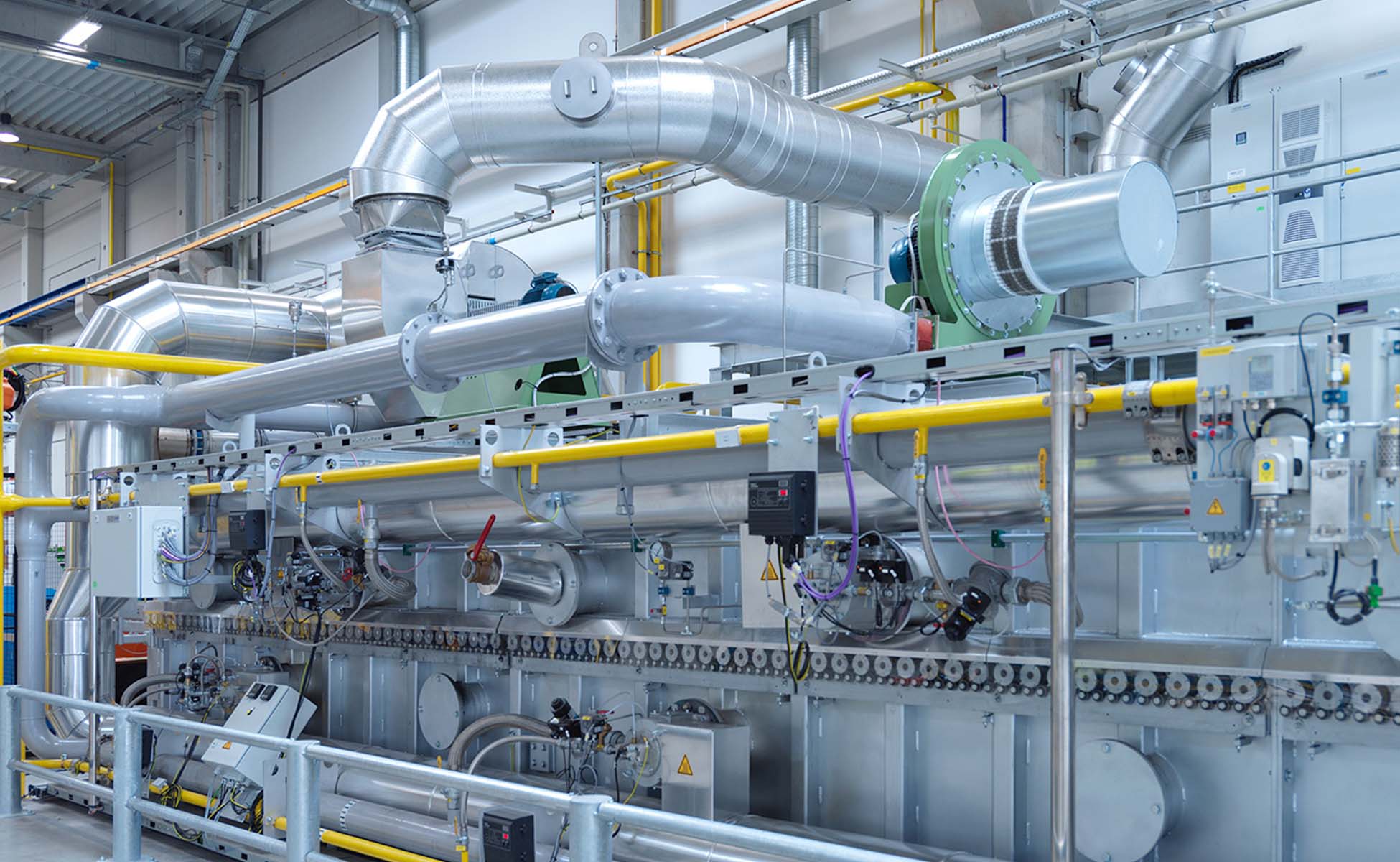Contents: Austenitization
- Austenitization: Basics and Significance
- Phase Transformation during Austenitization
- Cooling after Austenitization
- Choice of Cooling Medium
- Microstructure after Hardening
- Significance of Austenitization in the Hot Forming Process
Austenitization: Basics and Significance
Austenitization is a process where the workpiece is heated to a specific temperature to form austenite. Austenite is a metallurgical phase of steel that is stable at high temperatures. Through austenitization, the steel matrix becomes austenitic, meaning that the atoms in the workpiece rearrange themselves to form a stable, uniform structure.
Phase Transformation during Austenitization
During austenitization, a complete phase transformation occurs, in which the previous microstructure of the steel, including carbides, is dissolved. This step is critical to achieving the desired properties of the workpiece. Following austenitization, cooling takes place, which is also an important part of the hot forming process.
Cooling after Austenitization
To ensure that the entire workpiece adopts a martensitic structure, the cooling rate must be faster than the critical cooling rate of the steel used. Martensite is an exceptionally hard phase of steel and imparts strength to the workpiece. By correctly selecting the cooling rate, the desired hardness and strength can be achieved.
Choice of Cooling Medium
Cooling can occur in various media, each with its specific cooling effect in different temperature ranges. The choice of the appropriate cooling medium depends on the specific requirements of the workpiece and the steel used.
Microstructure after Hardening
After hardening, the microstructure of steels that reach the hypereutectoid range typically consists of martensite, retained austenite, and carbides. In the heat treatment of tool steels, the proportion of these phases is of great importance, as they influence properties such as wear resistance and dimensional stability of the workpiece.
Significance of Austenitization in the Hot Forming Process
Therefore, austenitization is an essential step in the hot forming process to achieve the desired hardness and strength of steel workpieces. Through targeted heating and phase transformation, the steel matrix becomes austenitic, forming the basis for a high-quality heat treatment. Proper cooling and microstructure control after hardening are other crucial aspects to achieve the desired material properties. With this understanding of austenitization, manufacturers and engineers can optimize their heat treatment processes and produce high-quality steel products.
